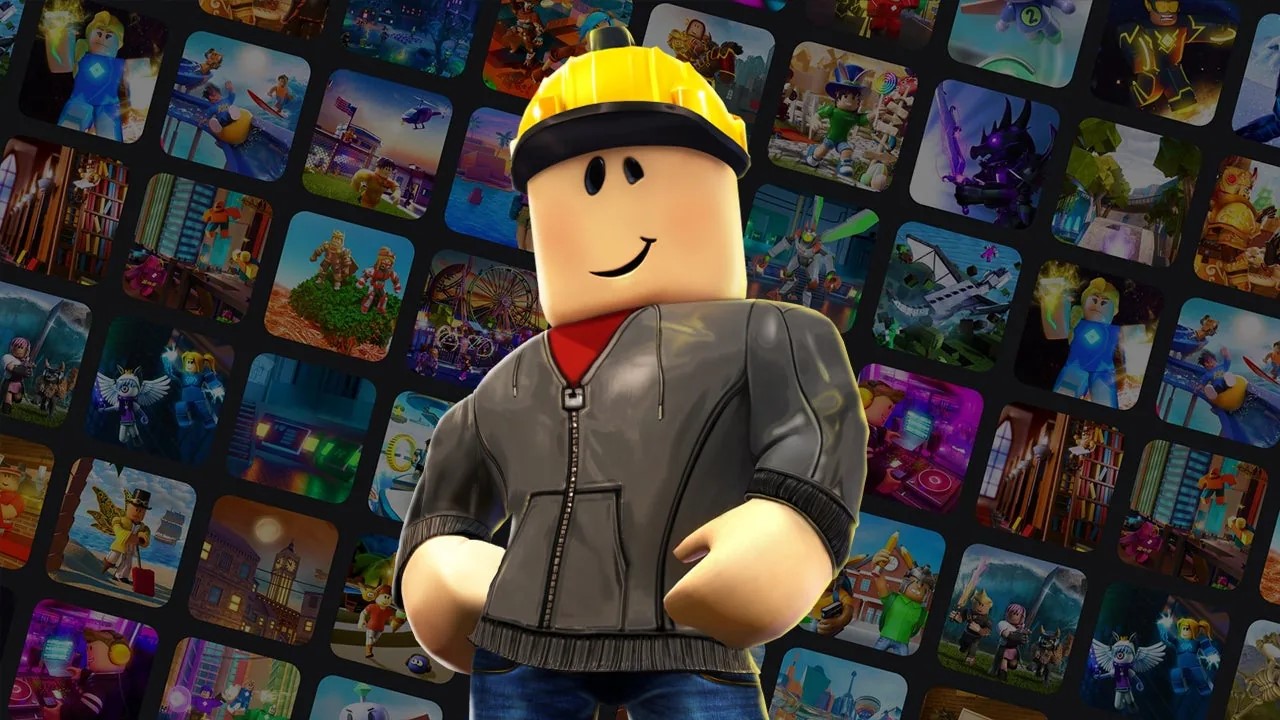- Beyond 2 features a 2560×2560 OLED lens with an adjustable IPD, 116 field-of-view, and a 100% edge-to-edge clarity.
- It is also the world’s lightest VR, and it sits perfectly on your face, allowing for rapid head movements without losing alignment.
- It comes with a price tag of $1019 for the base model and $1219 for the eye-tracking variant, which is worth it for the features it’s offering.
For years, we’ve been seeing advancements in virtual reality, but something was still missing every time a new VR headset was released. Most of these VRs often fell short due to their bulky designs, motion sickness, or mid-visuals.
However, Bigscreen has fixed all of these issues with their latest Beyond 2, and it just seems like we’re already living in the future. But before that, let me give you a brief history of the Bigscreen’s first Beyond headset.
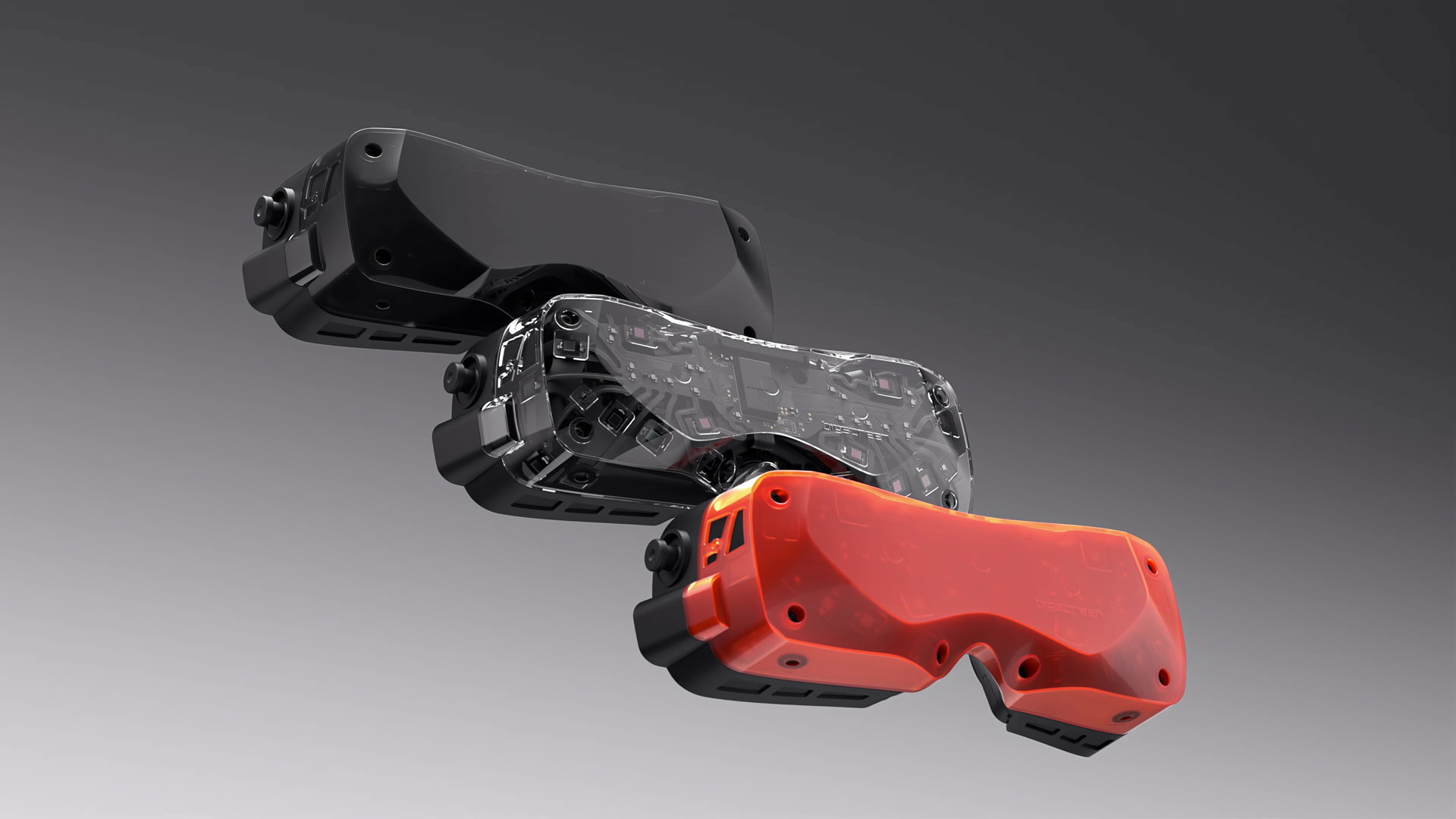
Bigscreen Solves The Issues Other VRs Had
See, unlike most VR manufacturers, Bigscreen acknowledged that most people hate having a bulky headset on top of their head. Not only is it heavy, but it also limits a lot of fast head movements.
Even if you can move your head quickly, the bulkier headsets would lose their alignment slightly, which would give your eyes bad visuals and would kill the immersion. With this approach, you always had to align it after movements.
Custom-Made For Your Face
Therefore, Bigscreen decided to mould their headsets so that they fit perfectly on your face. The only way you could order one is if you send them the 3d scan of your face from your iPhone.
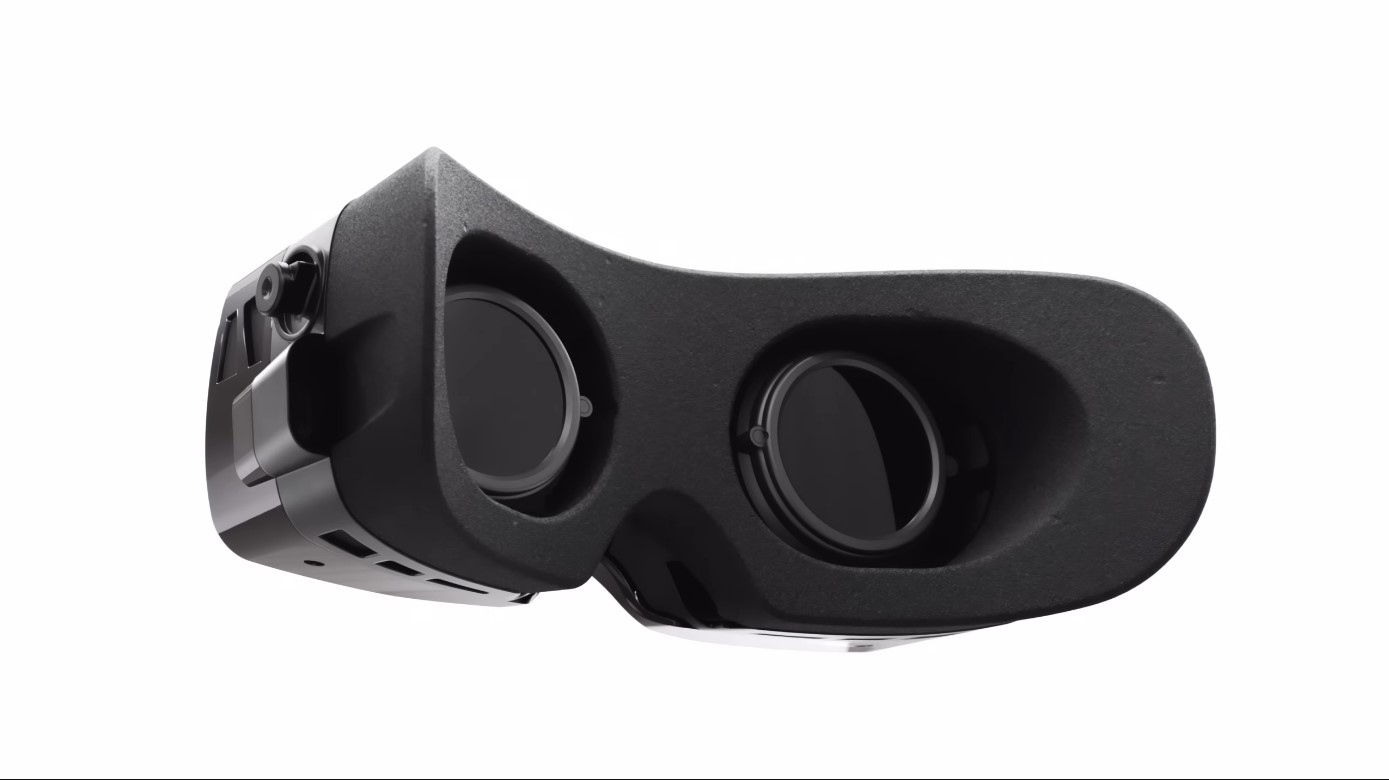
They would then manufacture the headset with a face cushion custom-made for your face, with factory-set IPD based on your scan. IPD refers to the distance between the pupils of your eyes.
This means you can’t share this with others, nor can you sell it unless someone has the same facial features as you. Bigscreen adopted the same approach with Beyond 2, while fixing the widely requested issues.
Adjustable This Time
With Beyond 2, you can adjust the IPD using the screw they’ve given you on the side of the headset. They also have a Halo Mount strap as a purchasable option, which allows you to share your headset with others.
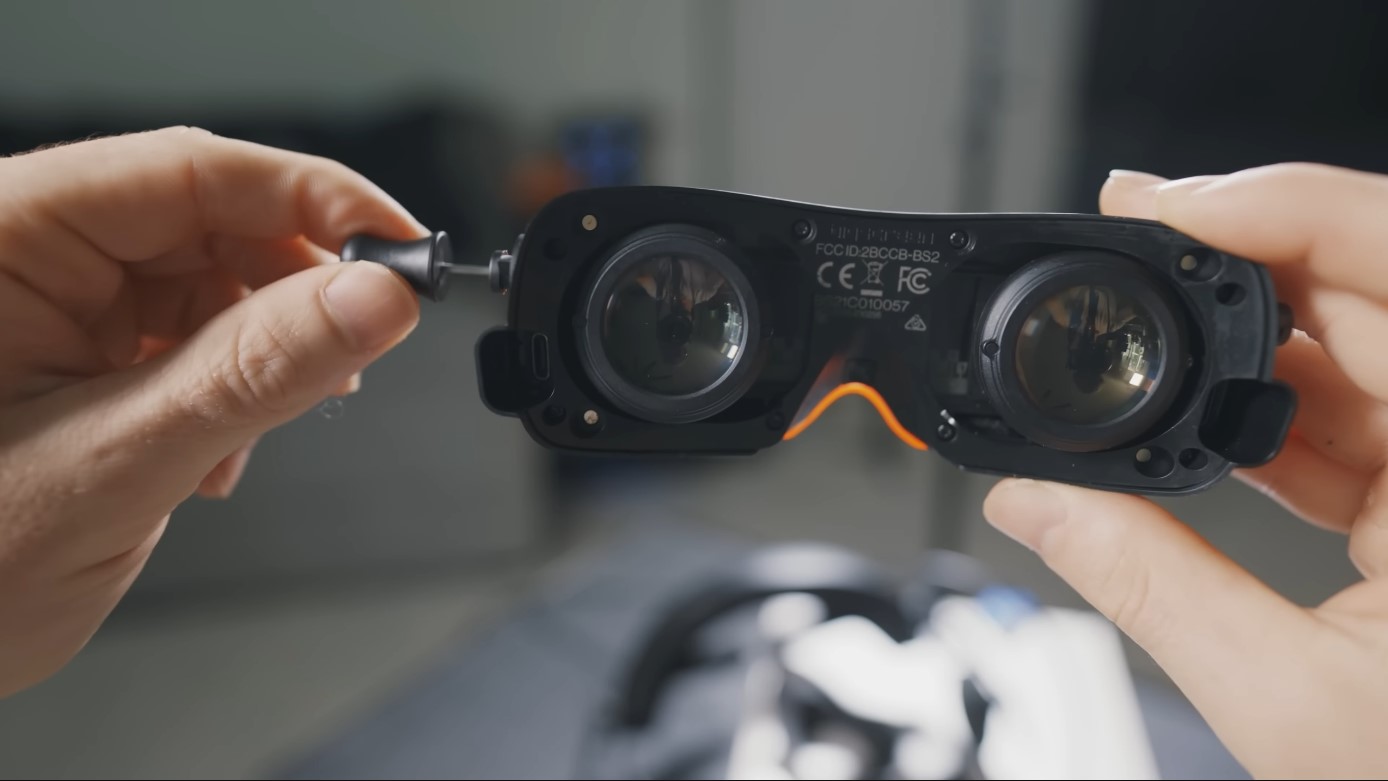
This strap allows users to slide the VR down, which is heavily inspired by night vision goggles. Using the VR with this mount is extremely comfortable, unlike other headsets such as the Meta Quest 3.
World’s Lightest VR
Another thing that Bigscreen improved on was its weight. Even though the first Beyond goggles were already light, weighing 127g, the Beyond 2’s goggles are further reduced in weight by 15%, weighing 107g.
With its lighter weight and incredible lens, you can go for hours on end without experiencing eye fatigue. Its exceptional features make the bulkier VRs, such as both Primax Crystals, look pointless, despite offering higher resolutions.
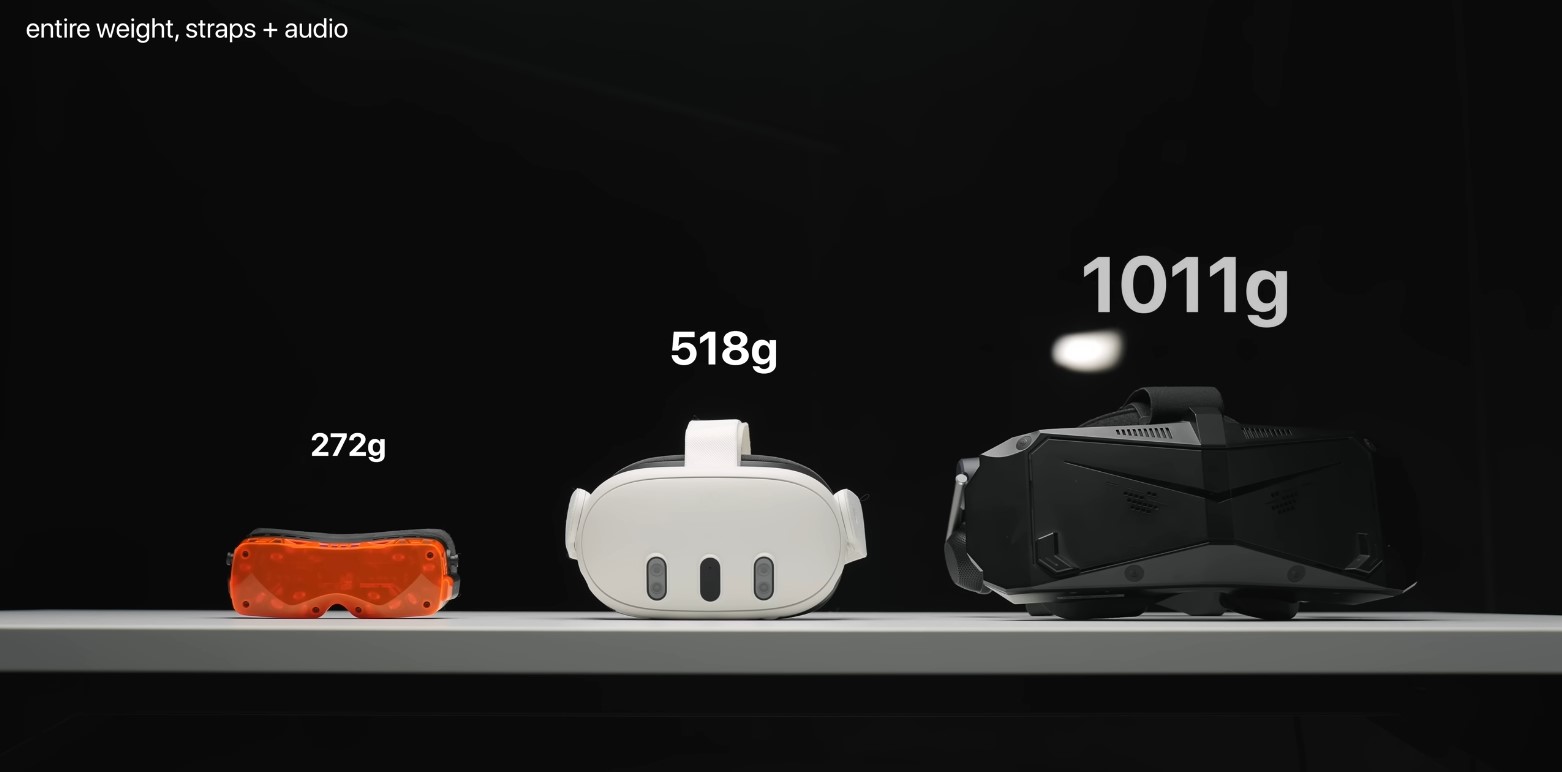
Bigscreen didn’t have to do that, but with this weight, Beyond 2 is officially the lightest VR in the world. Even with the entire headset, Beyond 2 is half the weight of the Meta Quest 3 and almost a quarter of that of the Primax Crystal.
Resolution & Lens Features
Not to mention, the Beyond 2 comes with a 2560 x 2560 per eye OLED display with 75Hz, which is a bump over the Quest 3 (2064 x 2208 LCD) and the Valve Index (1440 x 1660 LCD).
Speaking of its lens, Bigscreen went the extra mile. This VR comes with a 116° field of view, which is a boost compared to the Quest 3. It also features a 100% edge-to-edge clarity.
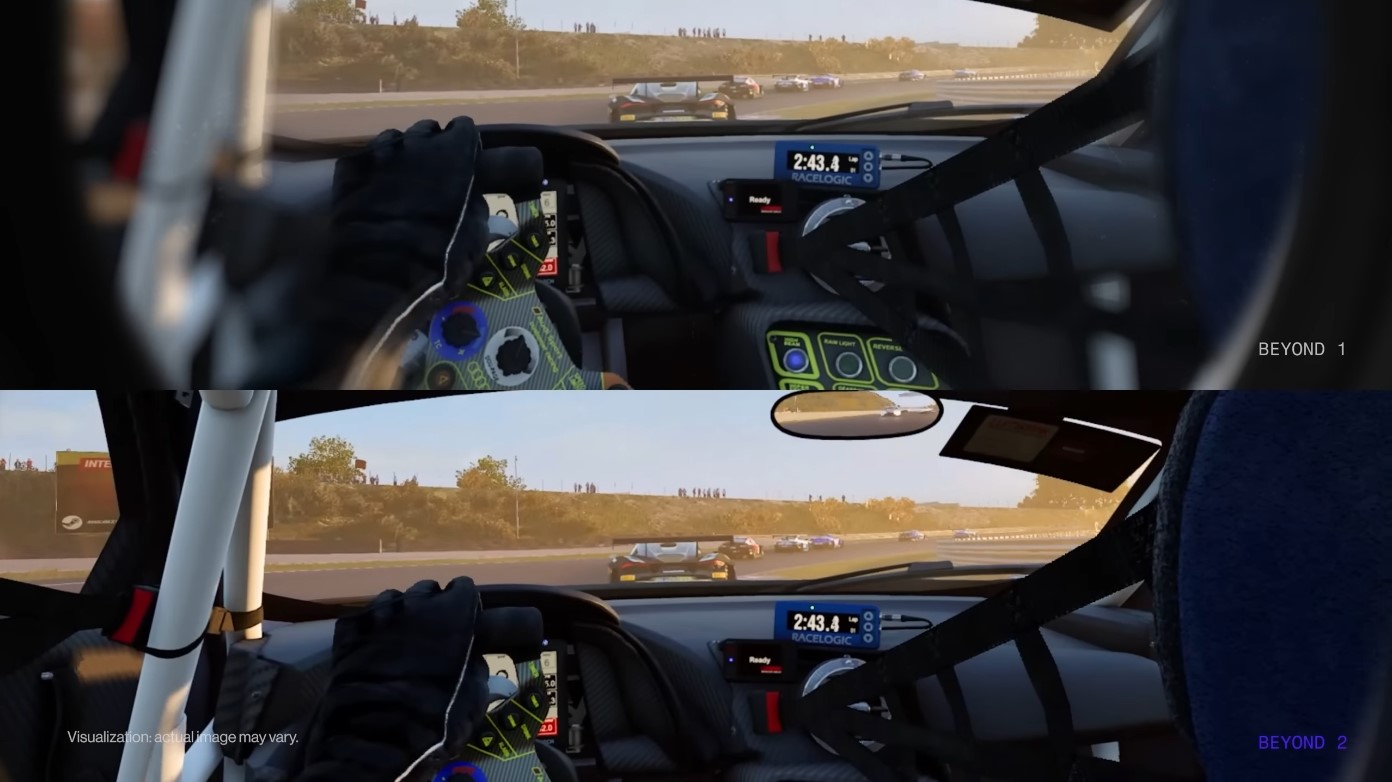
This kind of lens is a huge upgrade even from the higher resolution VR headsets because you can see all the textures and details. Yes, there are some dark spots at the corner, but the image isn’t blurry, unlike the previous Beyond.
Smallest Eye-Tracking System In The World
Since there is so little space to fit a standard eye-tracking system in this VR, Bigscreen had to make the world’s smallest eye-tracking system. The image sensor that comes with it is the size of a single grain of sand.

Although the eye-tracking features haven’t been fully announced yet, Bigscreen is collaborating with Nvidia, Valve, and game developers to add great features. This eye-tracking VR will be a separate variant that’ll be shipped in July 2025.
Price Tag
With all of these features, the Bigscreen comes with a price tag of $1019, whereas its eye-tracking variant costs $1219. While this isn’t the cheapest considering other VR headsets, it is still cheaper than Apple’s Vision Pro.
Even Apple can benefit and become more mainstream if it opts for cheaper Vision Pros in the future, if it decides to follow Beyond 2’s footsteps by merging affordability with the features the community needs.
Thank you! Please share your positive feedback. 🔋
How could we improve this post? Please Help us. 😔
[News Editor]
Obaid is pursuing a Law degree while working as a content writer. He has worked as a gaming writer for over three years because of his passion for the medium and reporting the latest updates in the industry. Having played hundreds of games, Obaid finds himself coming back to Elden Ring, Cyberpunk 2077, and Red Dead Redemption 2, with these games being among his favorites. He has also been mentioned on highly regarded websites, such as Wccftech, Metro UK, PS Lifestyle, GamePressure, VGC, and Gamespot.


 Threads
Threads
